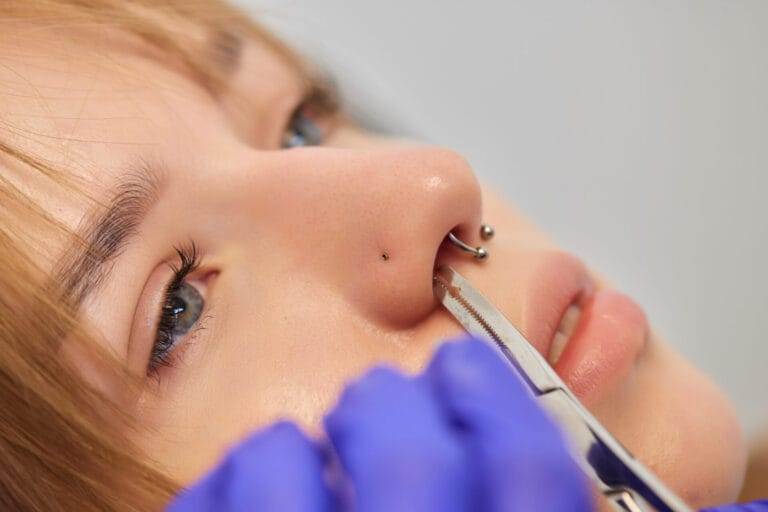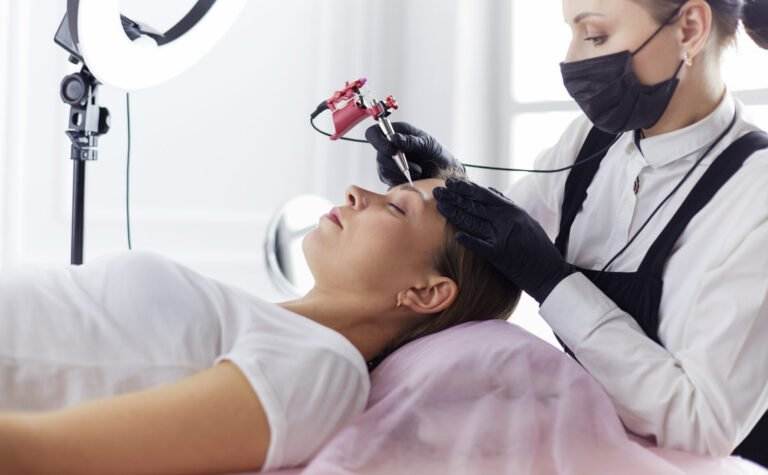Body piercings have become increasingly popular in modern times, with people of all ages and backgrounds choosing to adorn their bodies with various types of piercings. But what exactly are body piercings? In simple terms, body piercings involve the puncturing of a part of the body to insert jewelry. This can include piercings in the ears, nose, eyebrows, lips, tongue, belly button, and even more intimate areas.
The popularity of body piercings can be attributed to a variety of factors. For some, it is a form of self-expression and a way to enhance their personal style. Others may choose to get piercings as a form of rebellion or to challenge societal norms. Additionally, body piercings have become more mainstream and accepted in recent years, making them more accessible and appealing to a wider audience.
The Origins of Body Piercings: Ancient Practices and Traditions
Body piercings have a long history that dates back thousands of years. Historical evidence suggests that various cultures around the world practiced body piercing for different reasons. In ancient Egypt, for example, body piercings were associated with wealth and status. The pharaohs and members of the royal family would often adorn themselves with elaborate jewelry and piercings as a symbol of their power.
In other cultures, body piercings held religious or spiritual significance. For instance, in India, nose piercings were believed to enhance a woman’s fertility and marital prospects. Similarly, in certain African tribes, lip and ear piercings were seen as a rite of passage into adulthood and were believed to bring protection and good fortune.
The Cultural Significance of Body Piercings: From Religious to Fashion Statements
Body piercings have served various cultural purposes throughout history. In many religious traditions, body piercings are seen as a way to connect with the divine or to demonstrate devotion. For example, in Hinduism, nose piercings are considered sacred and are often worn by married women as a symbol of their marital status and commitment to their husbands.
In addition to religious significance, body piercings have also become a popular fashion statement. People today choose to get piercings as a way to express their individuality and personal style. From simple earlobe piercings to more elaborate combinations of multiple piercings, individuals can create unique looks that reflect their personality and aesthetic preferences.
Body Piercings in San Diego: A Local Perspective
San Diego is known for its vibrant and diverse body piercing scene. The city is home to numerous piercing studios and talented artists who cater to a wide range of piercing styles and preferences. Some popular piercing studios in San Diego include Apogee Body Piercing, Superfly Body Piercing, and Enigma Professional Piercing Studio.
These studios offer a safe and professional environment for individuals looking to get pierced. The artists are highly skilled and knowledgeable about proper piercing techniques and aftercare. They also provide a wide selection of high-quality jewelry options, allowing clients to choose pieces that suit their personal style.
The Evolution of Body Piercing Trends: From Traditional to Modern Styles
Body piercing trends have evolved over time, with new styles and techniques emerging alongside traditional practices. Traditional piercing styles often involve simple piercings in the earlobes or nostrils, while modern trends have expanded to include more creative and unconventional placements.
In recent years, there has been a surge in popularity for piercings such as helix piercings (piercings on the upper ear cartilage), daith piercings (piercings through the innermost fold of the ear), and septum piercings (piercings through the nasal septum). These trends have been influenced by celebrities and social media, with many people seeking to replicate the looks of their favorite influencers or celebrities.
The Risks and Safety Concerns of Body Piercings: Understanding the Health Implications

While body piercings can be a form of self-expression and personal style, it is important to understand the potential health risks associated with the practice. Improper piercing techniques or inadequate aftercare can lead to complications such as infection, scarring, and allergic reactions.
To minimize these risks, it is crucial to choose a reputable piercing studio with experienced piercers who follow strict hygiene protocols. It is also important to properly care for the piercing during the healing process, which typically involves cleaning the area with saline solution and avoiding touching or twisting the jewelry.
The Art of Body Piercings: The Role of Professional Piercers and Their Techniques
Professional piercers play a crucial role in ensuring safe and successful body piercings. A good piercer should have a strong knowledge of anatomy, proper sterilization techniques, and a keen eye for aesthetics. They should also be able to provide clear aftercare instructions and answer any questions or concerns that clients may have.
Different piercing techniques and tools are used depending on the type of piercing being performed. For example, a needle or cannula may be used for simple piercings, while more complex piercings may require the use of specialized tools such as dermal punches or insertion tapers. It is important for piercers to stay up-to-date with the latest techniques and tools in order to provide the best possible experience for their clients.
The Psychology of Body Piercings: Understanding the Motivations Behind the Practice
The decision to get a body piercing is often deeply personal and can be influenced by a variety of factors. Some individuals may choose to get pierced as a form of self-expression or to mark a significant event or milestone in their lives. Others may view body piercings as a way to reclaim ownership of their bodies or to challenge societal norms and expectations.
Psychologically, body piercings can have a positive impact on individuals. They can boost self-confidence, provide a sense of empowerment, and serve as a reminder of personal growth and resilience. For some, the act of getting pierced can be cathartic and transformative, allowing them to embrace their true selves and express their individuality.
The Social Stigma of Body Piercings: Breaking Stereotypes and Challenging Norms
Despite the growing acceptance of body piercings in modern society, there are still negative stereotypes associated with the practice. Some people may view those with piercings as rebellious, unprofessional, or even dangerous. These stereotypes can lead to discrimination and prejudice, making it difficult for individuals with piercings to be taken seriously or to be treated with respect.
Efforts have been made to challenge these stereotypes and promote acceptance of body piercings. Organizations such as the Association of Professional Piercers (APP) work to educate the public about safe piercing practices and to advocate for the rights of individuals with piercings. Additionally, many workplaces and institutions have revised their dress code policies to be more inclusive and accepting of body modifications.
The Enduring Legacy of Body Piercings in Human History and Culture
Body piercings have a rich history that spans across cultures and time periods. From ancient practices rooted in tradition and spirituality to modern trends driven by personal style and self-expression, body piercings continue to hold significance in human history and culture.
While there are risks associated with body piercings, proper care and attention can minimize these risks and ensure a safe and enjoyable experience. Ultimately, the decision to get a body piercing is a personal one that should be made with careful consideration and respect for one’s own body and individuality.
As body piercings continue to evolve and gain acceptance in society, it is important to challenge stereotypes and promote understanding and acceptance. By embracing the diversity of body modifications and recognizing the personal significance they hold for individuals, we can create a more inclusive and tolerant society.
If you’re interested in body modifications beyond piercings, you might want to check out this article on “Getting Rid of Old Tattoos Without Lasers: Tat2Away at Embellish PB.” This informative piece explores an alternative method for tattoo removal that doesn’t involve lasers. Find out more about this innovative technique and how it can help you say goodbye to unwanted ink. Read more






